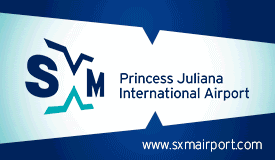~Identifying challenges and opportunities~
WILLEMSTAD:--- What is the impact of immigration on the economy of Curaçao? What is the effect on government finances? In what way is a policy implemented to integrate foreign workers as much as possible into the local labor market? Is this policy in line with the efforts to update and modernize the labor market policy in accordance with the country package (Landspakket), and, if so, how does it relate to the strategic objective of the government to increase labor participation (of Curaçao citizens) during this government period? What collaborations and/or partnerships can be entered into to effectively respond to the latest developments in the areas of migration, labor participation, and labor mobility, among others?
The Social and Economic Council (SER) of Curaçao is considering drawing up an extensive study on these and related questions. This study is a follow-up to the symposium jointly organized by the Social and Economic Councils of Aruba, Curaçao, and Sint Maarten on May 9 and 10, 2019, in Willemstad, Curaçao, on the central theme Migration and Socioeconomic Development, Policy Challenges and Options.
Meanwhile, as a result of that symposium, SER Curaçao has released two foresight studies in 2020 and 2021. The first is about the future of the AOV, in which the financial sustainability of General Old Age Insurance was analyzed using different migration scenarios (https://ser.cw/files/2020/03/036-2020-SER.pdf). The second exploration concerns a study conducted by the SER on the contribution of migrant populations to the socio-economic development of Curaçao (https://ser.cw/files/2021/06/054-2021-SER-1.pdf).
As a result of the COVID-19 crisis and the war in Ukraine, global transport costs have risen enormously, as have the prices of fuel and grain, leading to an increase in the inflation rate in Curaçao to 5.1% in June 2022 (CBS) due to the strong import dependency. Partly due to these developments, the dynamics in the local labor market have changed. The panorama is still one of unacceptably high unemployment (19.1%), especially among young people (42.2%), although there are hopeful signs of the arrival of new projects, which will increase employment. There are also favorable developments within the hospitality industry - one of the main economic pillars of the island - which are also expected to lead to an increase in the demand for labor.
The central question here is whether the available labor capacity on the local market, which is currently inactive, can be utilized effectively enough and, if so, which preconditions need to be met; and, if not, which combination of policy instruments (retraining, refresher courses for local people and planned and well-managed migration) can then be deployed. In light of the above, consideration is being given to publishing another study in which these themes will be discussed and their opportunities and challenges for policy, the economy, and the labor market, partly with a view to providing possible policy principles for optimizing labor market participation on Curaçao in the interest of economic growth.
How, in what way and within what time frame a start will be made on this study still needs to be discussed.
Of significance is the acknowledgment that a study by an advisory body of the government and parliament of Curaçao can make a substantial contribution to the realization of the objectives as contained in the 2022-2025 government program of the current cabinet that is based on a large extent on the coalition agreement 2021-2025, the Country Package and the UN Sustainable Development Goals (SDGs).










